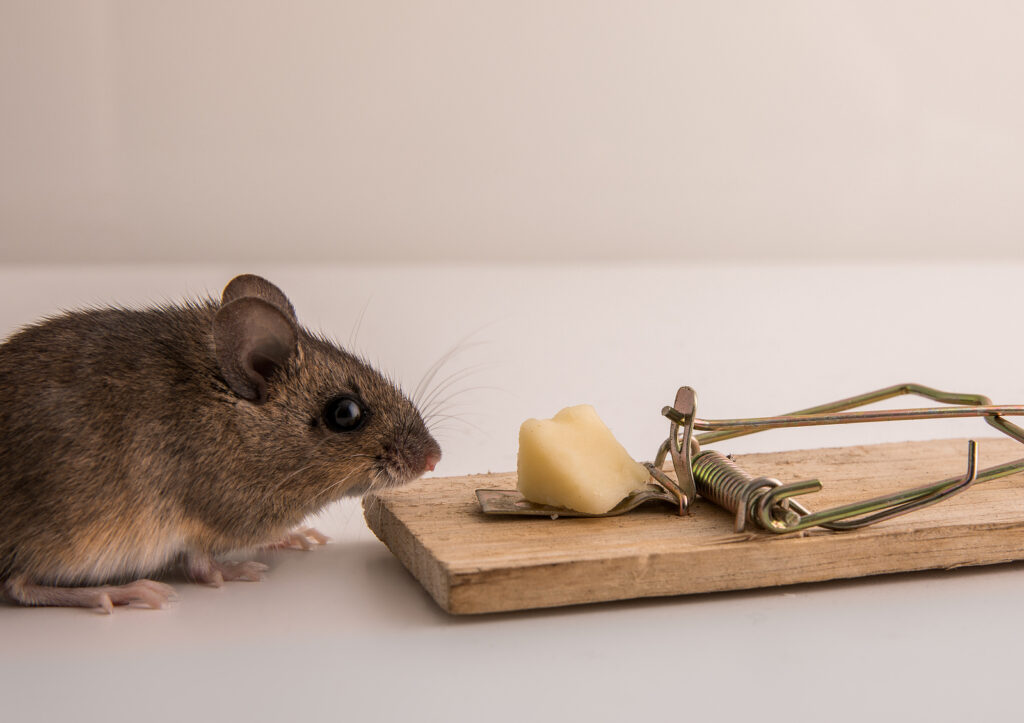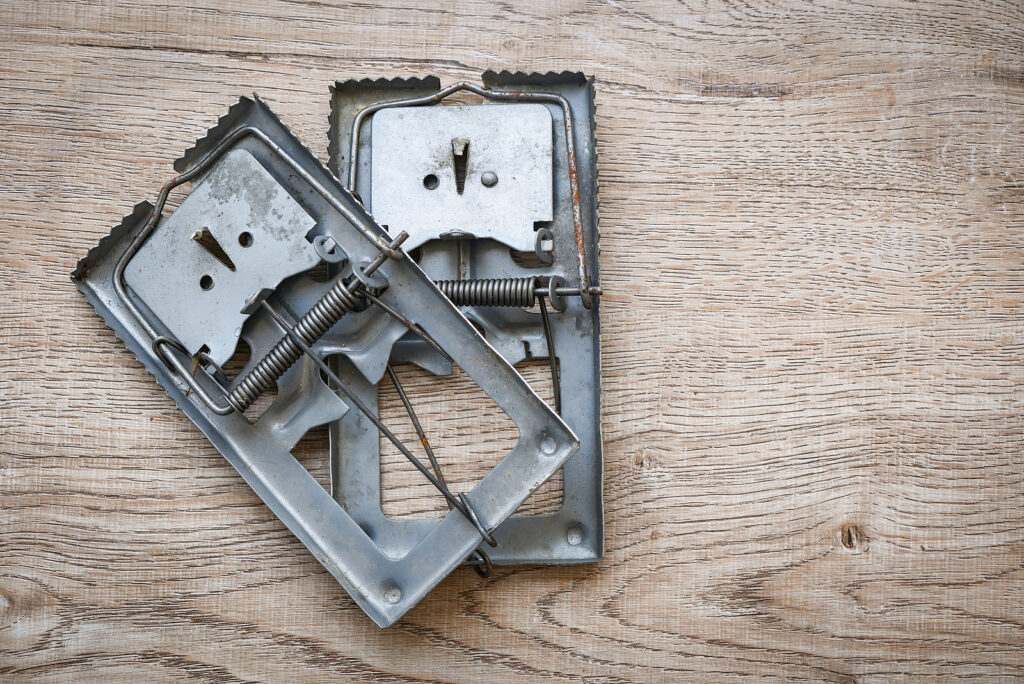How to Get Rid of Rats in House Fast DIY: Effective Techniques
Dealing with rats in my own home has been nothing short of a nightmare. These pesky rodents not only pose a serious health risk by spreading diseases but also wreak havoc on my property and contaminate my food.
If you find yourself facing a rat infestation like I did and are desperate to get rid of these unwanted guests swiftly, you've landed on the right page. In this all-encompassing guide, I'll share the effective do-it-yourself methods I've personally used to eliminate rats from my home. From preventive measures to successful elimination strategies, I've got your back in this rat-fighting journey.
Understanding the Rat Problem
To effectively address the issue at hand, it's crucial to delve deeper into the complex nature of the rat problem. Rats, as creatures, possess remarkable intelligence, acute sensory perception through their keen sense of smell, and impressive agility.
This combination of attributes makes them formidable pests. Understanding their behavior and motivations is key in developing effective solutions.
Rats are naturally attracted to human dwellings, including houses, for various reasons. They seek out these environments in pursuit of essential resources like food, water, and shelter.
Therefore, to successfully combat a rat infestation, it's imperative to adopt a perspective that mirrors their thought processes and instincts. This insight will guide us in devising strategies that can outsmart these resilient rodents and ensure a rat-free environment.
Understanding Rat Behavior
Gaining a comprehensive understanding of rat behavior is essential when addressing a rat infestation. Rats, being nocturnal animals, primarily come to life during the nighttime hours, making it imperative to consider this aspect when dealing with them.
Their adaptability is remarkable, allowing them to flourish in a wide range of environments, including urban and rural settings, which necessitates a nuanced approach to control.
To effectively tackle a rat infestation, it is beneficial to delve into their behavior patterns and tendencies. By recognizing their nocturnal activity, you can strategize pest control efforts to coincide with their peak hours.
Additionally, comprehending their adaptability helps in tailoring your approach to address their specific habitat preferences and food sources, ultimately enhancing the efficacy of your rat removal efforts.

Signs of a Rat Infestation
Recognizing the presence of a rat infestation at an early stage is essential for prompt intervention. Familiarize yourself with the following signs to detect a potential rat problem:
- Droppings: Rat droppings are typically small, dark in color, and tapered at both ends, resembling grains of rice. Keep an eye out for these droppings in areas where rats are active, such as basements, kitchens, or pantries.
- Gnaw Marks: Rats have a constant need to gnaw on objects to prevent their teeth from overgrowing. Inspect for signs of gnawing on wires, wood, or plastic materials. Chewed or damaged items can indicate rat presence.
- Scratching Noises: Since rats are nocturnal creatures, you might hear scratching or scurrying sounds emanating from your walls, attic, or ceiling during the nighttime. These noises are often a telltale sign of rats exploring your home.
- Nest Materials: Rats gather materials like paper, cardboard, fabric, and other soft substances to build their nests. The discovery of shredded and scattered materials of this nature is a strong indication of rat activity within your living spaces.
- Grease Marks: Rats leave behind greasy rub marks along walls and baseboards as they navigate through your home. These marks can accumulate over time and become more apparent, serving as another clue to their presence.
Steps For Effective DIY Rat Control
Step 1: Seal Entry Points
The initial and crucial step to effectively eradicate rats from your living space is to fortify your home to prevent their ingress. Rats are remarkably adept at infiltrating buildings, even through seemingly insignificant openings. Therefore, a comprehensive inspection and reinforcement process are imperative.
- Thorough Home Inspection: Begin by meticulously inspecting the exterior of your residence. Pay close attention to the foundation, walls, and roof for any visible cracks, holes, or gaps that could serve as potential entry points for rats.
- Sealing Openings: Once identified, promptly seal these openings using appropriate materials such as steel wool, wire mesh, or caulk. Focus particularly on areas around pipes, vents, and windows, as these are often favored access points for rodents seeking shelter.
- Door Sweeps: To further fortify your defense against rat intrusion, consider installing door sweeps beneath exterior doors. These sweeps effectively seal the gaps at the bottom of doors, denying rats easy access to your home through this route.
- Inspect Attics and Basements: Don't forget to examine attics and basements for any potential entry points. Rats can gain access through damaged rooflines or foundation gaps. Seal any openings found in these areas as well.
- Chimneys and Vent Screens: Install screens or caps on chimneys and vents to prevent rats from entering through these openings. Ensure the screens are made of sturdy material that rats cannot chew through.
Step 2: Remove Attractants
To effectively discourage rats from establishing a presence in your home, it is essential to address the factors that attract them, namely food, water, and shelter. Taking comprehensive steps to remove these attractants will significantly reduce the likelihood of rat infestations.
- Food Storage: Store food items securely in airtight containers to prevent rats from accessing them. Elevate food storage whenever possible, keeping it out of their reach. This includes both human and pet food.
- Regular Cleaning: Maintain a diligent cleaning routine to promptly eliminate crumbs, spills, and food debris from your living areas. Remember to clean pet food dishes immediately after your pets have finished eating.
- Effective Trash Management: Invest in sturdy trash cans equipped with tight-fitting lids. Rats are drawn to the scent of discarded food, so ensure that your trash is sealed properly. Additionally, establish a regular trash removal schedule to minimize the time trash sits out and attracts rodents.
- Water Source Control: Rats require water to survive, so addressing water sources is crucial. Inspect your home for any leaks, including dripping faucets, pipes, or appliances. Fix these issues promptly to eliminate standing water. Outside your home, ensure that drainage systems are functioning correctly to prevent water accumulation.
- Pet Waste: If you have pets, regularly remove their waste from your yard to discourage rats from being attracted to the scent. Dispose of pet waste in a sealed container or designated pet waste disposal system.
Step 3: Use Natural Deterrents
In addition to fortifying your home and eliminating attractants, you can employ natural substances and strategies to further deter rats from invading your space. Rats have sensitivities to certain odors and threats from potential predators, making these methods valuable in your rat prevention toolkit.
- Peppermint Oil: Rats have an aversion to the strong scent of peppermint oil. To utilize this natural deterrent, soak cotton balls in peppermint oil and strategically place them in areas where rat activity is suspected. Refresh these cotton balls periodically to maintain their effectiveness.
- Cayenne Pepper: Sprinkling cayenne pepper in areas frequented by rats can be a potent deterrent. The pungent and spicy smell of cayenne pepper is highly unpleasant to rodents, causing them to steer clear of treated areas.
- Ammonia Solution: An ammonia and water mixture can be applied to rat-prone areas to discourage their presence. Be mindful that ammonia has a potent odor, so use this method in well-ventilated areas and with caution.
- Predator Decoys: Consider placing owl or snake decoys in your yard or near potential rat entry points. Rats are naturally wary of these predators and may avoid areas where they believe these threats are present. Be sure to move the decoys occasionally to maintain their effectiveness.
- Natural Repellent Plants: Some plants have natural rat-repelling properties. Examples include mint, marigolds, and lavender. Planting these around your home or garden can serve as a natural deterrent.
- Ultrasonic Devices: Ultrasonic rat repellent devices emit high-frequency sound waves that are imperceptible to humans but are annoying to rats. These devices can be plugged in or placed in areas where rats are active.
Step 4: Set Traps
When preventive measures and natural deterrents prove insufficient, it becomes imperative to take more direct and strategic actions through the use of traps. Properly deployed traps can effectively address a rat infestation, and understanding the various options available is essential.
- Snap Traps: Traditional snap traps are familiar and effective tools for rat control. These devices consist of wooden or plastic platforms with a spring-loaded mechanism that swiftly snaps shut when triggered by the rat's movement. To maximize their effectiveness, place snap traps along rat pathways or near suspected rat activity areas. Bait these traps with enticing treats like peanut butter or cheese to attract the rodents.
- Glue Traps: Glue traps are adhesive boards designed to capture rats by immobilizing them upon contact. They are particularly useful in locations where snap traps may not be suitable, such as areas with children or pets. Set glue traps in areas where rats are known to travel or in confined spaces like behind appliances.
- Live Traps: For those who prefer humane rat removal methods, live traps offer a non-lethal alternative. These traps allow you to capture rats alive, giving you the opportunity to release them far from your home. Ensure the live traps are appropriately sized for rats, and use bait like peanut butter or fresh fruits to entice the rodents.
- Electric Traps: Electric rat traps deliver a quick and humane death to rats by delivering a lethal electric shock when they enter the trap. These traps are effective and ensure a quick and humane kill.
- Multiple Traps: Consider using multiple traps simultaneously, especially in the initial stages of addressing an infestation. Rats are cautious creatures, and placing several traps can increase your chances of successful captures.
- Regular Monitoring: Check your traps regularly to ensure they remain effective. Dispose of captured rats in accordance with local regulations and best practices.
Step 5: Practice Sanitation
Preserving a rat-free environment hinges on stringent sanitation practices. These measures not only discourage the resurgence of rat infestations but also enhance the overall quality of your living space.
- Regular Cleaning Regimen: Develop a comprehensive cleaning routine that encompasses vacuuming, mopping, and the wiping down of surfaces. Regularly remove dust and debris to eliminate potential hiding places for rats. Pay special attention to areas where food particles may accumulate, such as kitchens and dining areas.
- De-Clutter Effectively: A clutter-free environment is less attractive to rats seeking secluded spots for shelter and nesting. Regularly declutter your living spaces, basements, and attics to minimize potential hiding spots. Store items in sturdy, sealed containers, rather than cardboard boxes, which rats can chew through.
- Continuous Vigilance: Rat prevention does not cease once an infestation is addressed. Maintain a constant state of vigilance by routinely inspecting your home for any signs of renewed rat activity. Check for fresh droppings, gnaw marks, or unusual noises that could indicate the presence of rats.
- Outdoor Space Oversight: Extend your rat prevention efforts to your yard and outdoor areas. A well-maintained yard reduces the risk of outdoor rat populations infiltrating your property. Regularly trim overgrown vegetation, clear debris, and ensure that outdoor trash cans have securely fitted lids.
- Sealing Entry Points: Periodically reassess and reinforce the security of your home's structural integrity. Weather, wear, and tear can create new vulnerabilities that rats may exploit. Ensuring that potential entry points remain sealed is essential in preventing their return.
- Responsible Waste Management: Dispose of trash promptly and responsibly. Avoid leaving food scraps or garbage bags exposed outside, as these can attract rats. Secure your trash cans to prevent rats from accessing discarded food.

The Importance of Safety
Prioritizing safety when dealing with rats is of utmost importance due to the potential health risks associated with these rodents. rats and mice can carry a variety of diseases, including leptospirosis, hantavirus, and salmonellosis, making it crucial to take stringent precautions when addressing an infestation.
When engaging in rat control efforts, it is imperative to adopt safety measures. Firstly, always wear protective gear such as gloves and a mask when handling traps or cleaning up rat-infested areas. This safeguards you from direct contact with potentially contaminated materials and airborne particles that may contain harmful pathogens.
Furthermore, if you plan to use chemicals or poisons as part of your rat control strategy, it is essential to exercise extreme caution. Store these substances in secure, inaccessible locations, well out of the reach of children and pets. This reduces the risk of accidental exposure and ensures the safety of your loved ones.
FAQs
Q1: What are some common signs of a rat infestation in a house?
A1: Common signs of a rat infestation include the presence of rat droppings, gnaw marks on objects, scratching or scurrying noises, materials like paper or fabric scattered for nests, greasy rub marks along walls, and the sighting of rats themselves.
Q2: How can I effectively seal entry points to prevent rats from getting into my house?
A2: To seal entry points, conduct a thorough inspection of your home's exterior, including foundation, walls, roof, and entry areas around pipes and vents. Seal gaps and cracks with materials like steel wool, wire mesh, or caulk. Install door sweeps, chimney caps, and vent screens to further fortify your home.
Q3: What natural deterrents can I use to keep rats away from my house?
A3: Natural deterrents include peppermint oil-soaked cotton balls, cayenne pepper sprinkled in rat-prone areas, ammonia and water solutions, predator decoys like owls or snakes, and planting rat-repelling plants such as mint, marigolds, and lavender. Ultrasonic devices that emit high-frequency sound can also deter get rid of mice.
Q4: What types of traps are effective for catching rats in a house?
A4: Effective rat traps include snap traps, glue traps, live traps, and electric traps. Snap traps are commonly used and baited with peanut butter or cheese. Glue traps immobilize rats upon contact. Live traps capture rats for humane release, and electric traps deliver a quick, humane kill.
Q5: What should I do if I suspect a rat infestation in my house?
A5: If you suspect a rat infestation, take immediate action. Conduct a thorough inspection to confirm the presence of rats. Seal entry points, remove attractants, use deterrents, set traps, maintain sanitation, and monitor for signs of rat activity. If the problem persists, consider seeking professional pest control services.
Q6 How to get rid of rats in your house fast?
A6: Getting rid of rats in your house quickly requires a combination of strategies. Here are some steps to follow:
- Identify the Problem: Determine the extent of the infestation and where rats are entering your home.
- Remove Food Sources: Rats are attracted to food, so store food in airtight containers and clean up crumbs and spills promptly.
- Set Traps: Use rat traps or bait stations with effective baits, such as peanut butter or bacon, in areas frequented by rats.
- Seal Entry Points: Block any openings or cracks where rats can enter your house. Use steel wool, caulk, or mesh screens to seal gaps.
- Keep a Clean Environment: Regularly clean and declutter your home to eliminate hiding spots for rats.
- Consider Professional Help: If the infestation is severe or persists, contact a pest control professional for expert assistance.
Q7: Are there any health risks associated with dealing with rats in a house?
A7: Yes, there are health risks associated with rats as they can carry diseases like leptospirosis, hantavirus, and salmonellosis. When dealing with rats, wear protective gear like gloves and a mask to minimize direct contact with contaminated materials and airborne particles. Keep chemicals and poisons out of reach of children and pets for safety.
Q8: How can I prevent future rat infestations in my house?
A8: To prevent future infestations, maintain a clean living space, seal potential entry points, store food in airtight containers, secure trash cans with tight-fitting lids, and regularly inspect your home for signs of rat activity. Outdoor maintenance, such as trimming vegetation and responsible waste management, also helps deter ways to get rid from your property.
Conclusion
Getting rid of rats in your house fast is achievable with the right approach. By understanding the problem, sealing entry points, removing attractants, using natural deterrents, setting traps, practicing sanitation, and seeking professional help if necessary, you can regain control of your home.
Remember, persistence is key in rat control. Keep a vigilant eye on your property to prevent future infestations. With these techniques, you can reclaim your home from these unwanted pests and enjoy a rat-free living space.
Sources
https://www.cdc.gov/healthypets/pets/wildlife/rodent-control.html
https://www.epa.gov/rodenticides/identify-and-prevent-rodent-infestations




